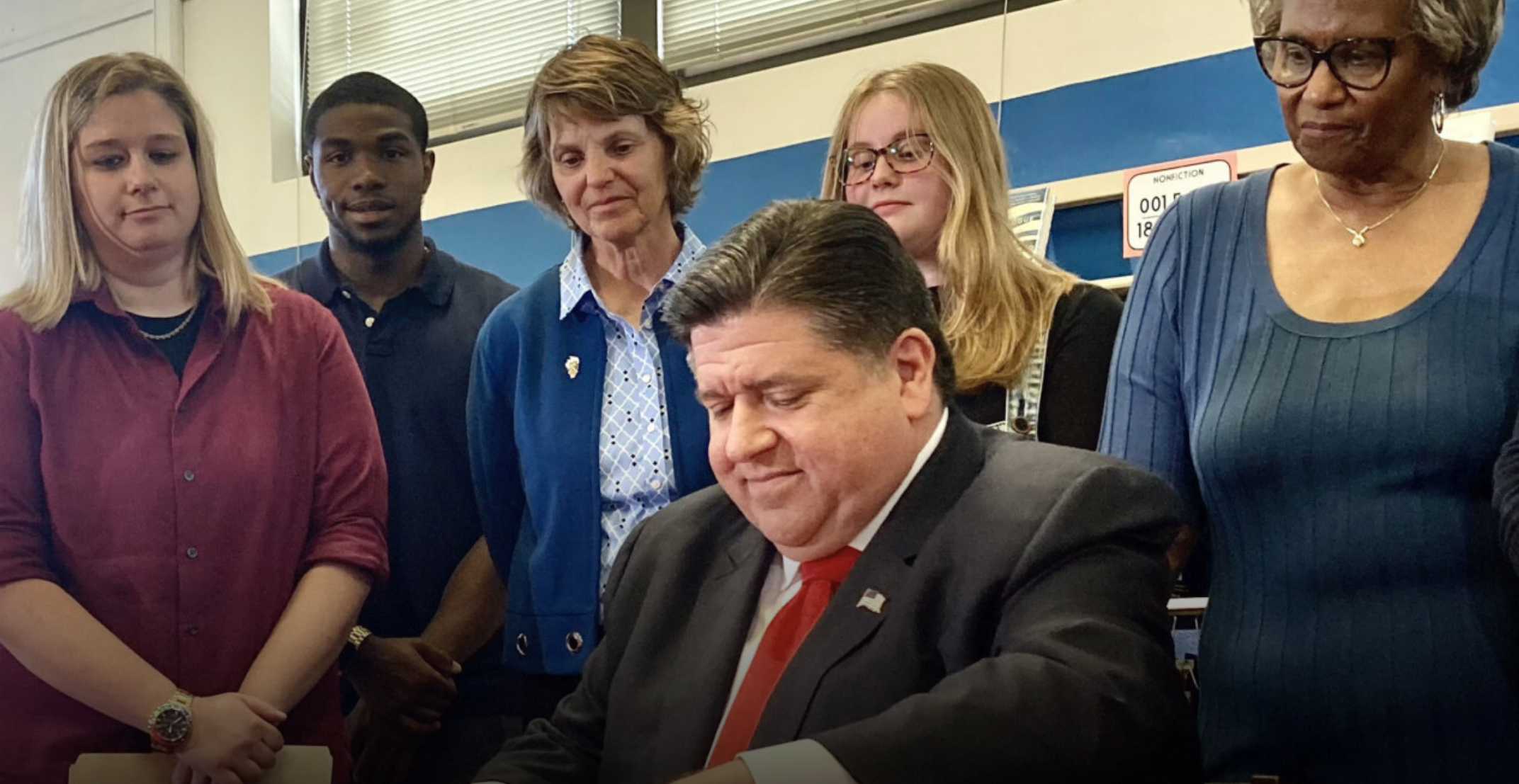Illinois State Board of Education data shows statewide teacher shortage is myth

Students and teachers are back in school across Illinois, but teachers unions keep claiming there are not enough teachers to run classrooms.
That’s wrong. State data proves it.
Teachers’ unions have perpetuated the teacher shortage myth. The Illinois Education Association claimed Aug. 28, 2022, the “teacher and education employee shortage [is] getting worse.”
But according to data from the Illinois State Board of Education, there are fewer students and more teachers in Illinois today compared to a decade ago.
Public school enrollment in Illinois has decreased by nearly 9% in the past decade with just under 1.9 million students enrolled in the 2020-2021 school year. That represents a loss of nearly 180,000 since 2011-2012. Nearly 70,000 of those students have left the public school system since the COVID-19 pandemic.
The number of teachers in the state has simultaneously been rising during this 10-year period. Illinois had over 4,500 more teachers in 2020-2021, the most recent year with fully available data, than in the 2011-2012 school year. Teacher numbers have climbed by 3.5% while the number of students has dipped by nearly 9%.
Just since the onset of the pandemic, Illinois has added nearly 2,000 teachers to public school districts across the state.
Despite this data, teachers’ unions claim there is a shortage of teachers and education staff. Vacancies exist in public schools, and they have for decades. But they are typically concentrated in specific districts and positions.
There are currently 5,301 open positions in the state, according to ISBE. Nearly 60% of those vacancies are paraprofessionals and school support personnel. One-fifth of those empty positions are in Chicago Public Schools, which has struggled with enrollment in the past decade and where one-third of their school buildings are less than half full.
Chad Aldeman, who writes about education finance at Edunomics Lab, suggests some school districts across the country have recently hired additional staff with the aid of federal pandemic funds.
“I think we’ve actually gained classroom teachers in the last year, because of new hiring after the federal stimulus bills,” said Aldeman. If such new positions go unfilled, they’re counted as additional vacancies.
Heather Schwartz, a senior policy researcher at the Rand Corp., told The Atlantic, “There might be a shortage in the sense that a lot of new positions are going unfilled.”
Teachers unions remain bent on pushing the narrative of a teacher shortage, but it seems odd to claim a shortage when there are more teachers employed in Illinois public schools right now than a decade ago, or even in 2019.
In Chicago Public Schools, the district with many of the unfilled positions, the Chicago Teachers Union seems to only exacerbate the issue of vacancies by refusing to shutter under-enrolled and subsequently low-performing schools. About one-third of CPS’ traditional, non-charter schools are less than half full. Among those schools, the five most empty are at less than 10% capacity and at most 6% and 1% of their students are proficient in reading and math, respectively.
CTU supports moratoriums on public school closures, further perpetuating under-enrolled schools, many of which subject students to low-performing academic atmospheres. Teachers staffing near-empty, underachieving schools could be better used elsewhere.
CTU exemplifies how teachers’ unions have continually sought their own agendas in district decisions, regardless of the data or benefit to students and schools.
On Nov. 8, 2022, voters in Illinois will have a chance to stand up to the misleading claims of teachers unions which harm district schools. Amendment 1 is the first thing on the ballot this November and would give Illinois teachers union bosses the nation’s most extreme government union powers, but many students and parents have already shown they’ve had enough of teachers union antics by leaving the public education system.
Amendment 1 is a referendum on taxes in Illinois more than anything else. One conservative estimate is Amendment 1 would virtually guarantee higher property taxes of more than $2,100 during the next four years, simply by maintaining Illinois’ status quo. Should government union bosses exercise new powers granted through Amendment 1, the tax hike on Illinoisans could wind up being far more costly.
CTU and Chicago’s schools show what happens when government unions have too much power. Voters on Nov. 8 will have a chance to give them more power, or to say unelected government union bosses have no business dictating students’ success.
Miss Clipping Out Stories to Save for Later?
Click the Purchase Story button below to order a print of this story. We will print it for you on matte photo paper to keep forever.

